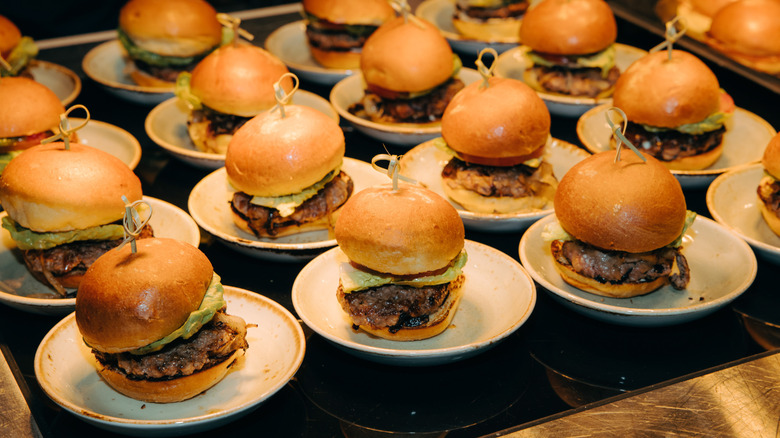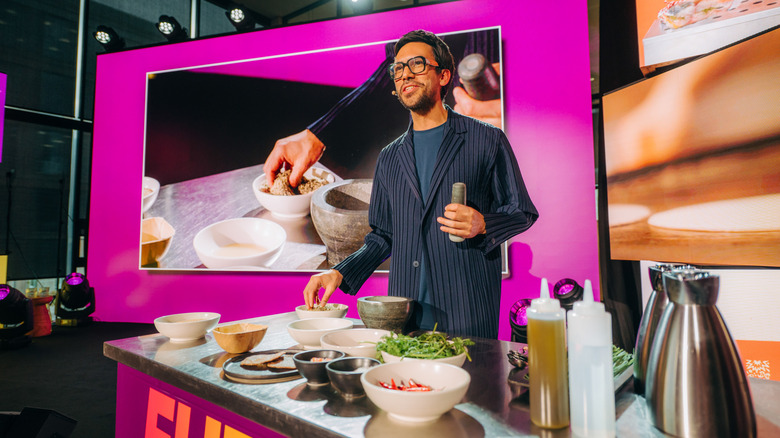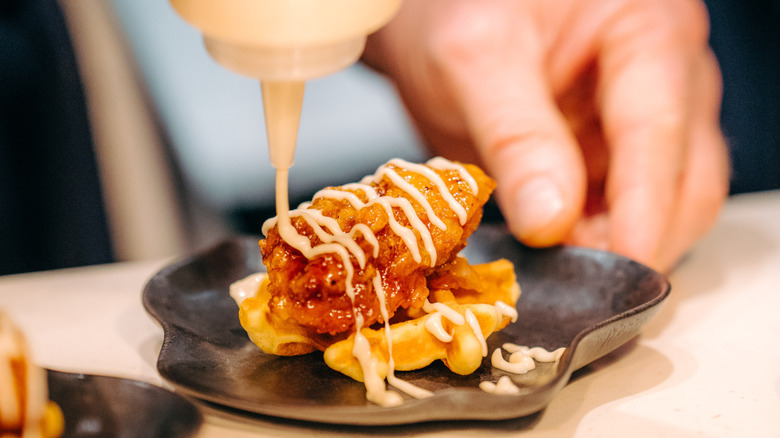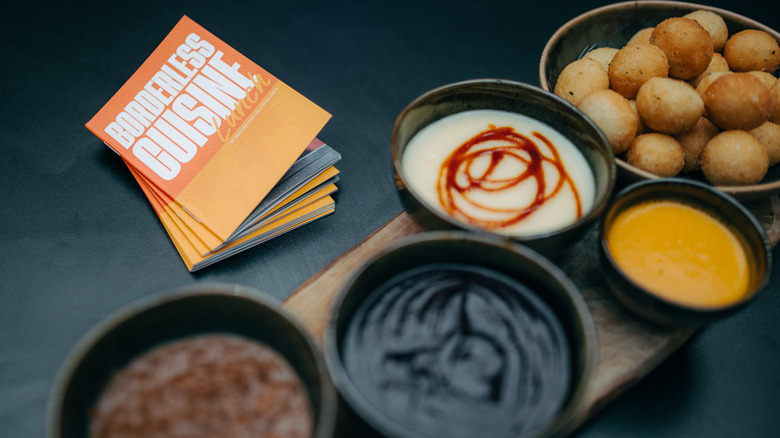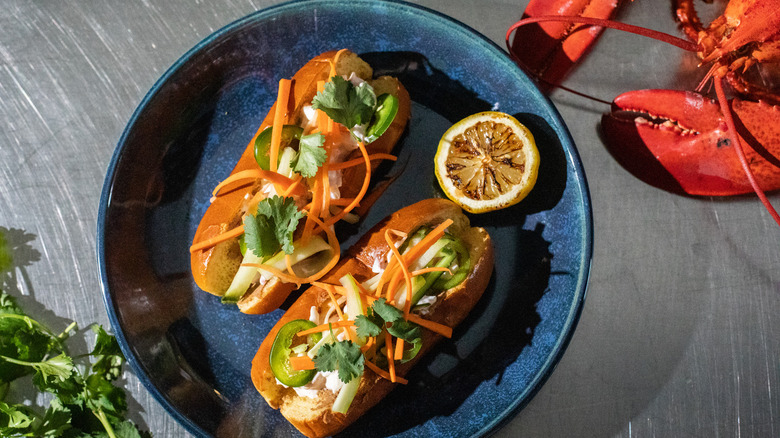The Biggest Food Trends Of 2025: Borderless Cuisine Is Building Culinary Bridges
Sponsored Content. We may receive a commission on purchases made from links.
When Unilever Food Solutions determined the biggest food trends of 2025 for the company's annual Future Menus report, one theme in particular stood out: Diners are eating global. Whether chefs are connecting with their Culinary Roots or innovating Asian night market and Mexican taco truck staples with Street Food Couture, there is a hunger to dive into dishes from around the world, both classic and contemporary.
And then there's Borderless Cuisine. On its face, the trend, which marries the flavors and concepts of multiple cuisines, seems basic enough. But as you'll soon learn, that union isn't so simple. It's also, by no means, a new phenomenon. This cross-pollination through migration and various other shared experiences has shaped the ever-evolving global culinary landscape for centuries from the Peruvian-meets-Japanese Nikkei cuisine to Tex-Mex. However, the focus on Borderless Cuisine is now stronger than ever. This is a trend that not only endures in 2025, it's being taken to even greater heights.
From Mexico to the UK: The culinary journey of chef Santiago Lastra
Perhaps no chef currently exemplifies the core of Borderless Cuisine and the depths of its culinary potential better than chef Santiago Lastra. His groundbreaking restaurant Kol took the London food scene by storm when it opened in 2020 (it currently sits at number 17 on the World's Best 50 Best Restaurants list and boasts a Michelin star).
The genius of Kol stems from Lastra's commitment to bringing the flavors of his Mexican upbringing and recontextualizing them in order to adapt to his new surroundings. "We get inspired by ideas and flavors and memories of Mexico, and we apply British ingredients into that in an artistic form," Lastra told the crowd at the Future Menus 2025 celebration at Hive, Unilever Food Solutions' Innovation Centre. "What we try to do is to base on science ... And the most important thing for us is Mexican flavor. So we have one rule in the restaurant: that things have to taste Mexican."
It comes as no surprise that removing the cornerstone ingredients from Mexican cuisine and filling in the gaps with what's available locally is quite the feat, and it took years of trial and error (and lessons in chemistry) for Lastra to figure out how to hit the right flavor notes. In fact, he likened the process to playing the piano. "I've been playing those chords correctly the whole time, and Mexican food has been around these natural pairings without me noticing them," he said.
At the Future Menus event, Lastra dazzled the crowd by preparing his version of guacamole which eschews the traditional avocado base for ingredients native to the UK such as hemp seeds and gooseberries. The result was something familiar: the creamy, tangy and nutty notes that make guacamole so beloved, but transformed into a dish unique to Lastra and his continent hopping experience.
Just don't call it 'fusion'
When thinking about what Borderless Cuisine represents, forget the word "fusion." Unilever Food Solutions Chief Marketing Officer Angela Klute jokingly refers to it as "the F-word" when used in conjunction with the trend. "Fusion is just taking two things, putting them together, but you don't have any connection with it," said chef Santiago Lastra, who knows a thing or two about bringing out the best in Borderless Cuisine.
Unilever Food Solutions Corporate Executive Chef Brandon Collins points to the '80s and '90s heyday of fusion cuisine and how the trend went awry. "It became this hodgepodge of, quite honestly, really bad food," he said.
According to Lastra, "adaptation" is truly at the heart of what Borderless Cuisine is all about. "That's how the best recipes in the world were created," he said, "by adapting yourself to those limitations when the world was not as connected as it is now."
From burgers to lasagna: How Borderless Cuisine is reinventing the classics
What better way to get a true taste of Borderless Cuisine than to assemble a roster of chefs from around the world and have them collaborate on a next level lunch? At the Future Menus 2025 unveiling event, members of the Unilever Food Solutions culinary team came together to create a menu that offered bold new takes on familiar favorites.
One of the signature bites served at the celebration was the Borderless Burger, the brainchild of chef Brandon Collins and Chris Zhong, Senior Chef Consultant for Unilever Food Solutions, China. According to Collins, the onion smashed burger topped with aged cheddar, avocado, and green chili sauce was inspired by the post-war influence of Chinese cuisine in the U.S. "Why not take flavor profiles that we are all very familiar with and cooking techniques that we have all started using in our homes on a regular basis and marry it with what could be arguably one of the most quintessential American dishes?"
Another showstopper was the Crispy Lasagna, courtesy of chefs Giuseppe Buscicchio, Jimena Solis, and Andreas Willner. Bringing South American and European influences into the fold, the talented trio combined Argentinian-style ossobuco brasato, Parmesan cream, Tuscan black cabbage, fried layers of fresh saffron-infused pasta, and cocoa bean for an unexpected yet harmonious bite.
Other highlights of the lunch included Flame Broiled Skewered Mackerel with Mango Pico & Rouille which expertly bridged Nordic and Latin flavors, and a Spicy Asian-Glazed Fried Chicken & Waffles that brought Far East heat to a Southern classic.
Banh Mi Style Lobster Roll recipe
Ready to try your hand at creating a mouthwatering Borderless Cuisine dish? Inspired by two of the world's most beloved sandwiches, Unilever Food Solutions' Banh Mi Style Lobster Roll is a Vietnam-meets-New England marvel that's destined to become an icon in its own right.
INGREDIENTS
(SERVES 4)
Pickled Vegetables
4 med. Carrots, peeled, julienned
3 stalks Celery, tops and bottoms removed, julienned
3 3⁄4 cups Hot Water, boiled
1 1⁄4 cups White Sugar
10 tsp Salt
1 3⁄4 Rice Wine Vinegar
Pork Pate
6 3⁄4 oz Pork Pate, prepared
7 1⁄4 oz Hellmann's Real Mayonnaise
1 tsp Chinese Five Spice
Lobster Filling
2.9 lbs Lobsters
2/3 cup Hellmann's Real Mayonnaise
1 TBSP Tamari
1 tsp Sesame Oil
As Desired Lemon, Juice and Zest
Garnish
2 cups Cilantro, fresh, washed, leaves removed
1/2 cup Mint, fresh, washed, leaves julienned
1 cup Green Onion, sliced
Toasted Buns
10 Top Split Buns
3 1⁄2 oz Hellmann's Real Mayonnaise
Assembly
Pickled Vegetables
Pork Pate
Lobster Filling
Garnish
Toasted Buns
METHOD
Pickled Vegetables
-
Dissolve Salt and Sugar in the hot water, then add Rice Vinegar.
- Add Carrot and Celery, then let stand for at least 1 hour. Drain and reserve for Sandwich build.
-
Massaging with Salt and Sugar, before adding the liquid, helps quicken the pickling process.
-
Pork Pate
-
Combine all ingredients in a food processor and blend until well combined.
Lobster Filling
-
Cook live Lobsters in a heavily salted pot of water. Approx. 11 minutes per 1lb of lobster.
-
Remove and submerge into an ice bath.
-
In a bowl, whisk together Hellmann's Real Mayonnaise, Tamari, Sesame Oil, and Lemon Juice and Zest.
-
Remove meat from shells, let cool, and roughly chop meat.
-
Gently fold Lobster meat int Mayonnaise mixture. Cover and refrigerate until ready to use.
Garnish
-
Combine all herbs.
Toasted Buns
-
Spread equal amounts of Hellmann's Real Mayonnaise on the outside of each Bun.
-
On a flat top, or in a pan, toast both sides of each Bun until golden brown.
Plating
-
Spread Pork Pate on one side of the inside of the Toasted Buns.
-
Fill each Bun with Lobster Filling.
-
Top each Bun with Pickled Vegetables.
-
Top each Bun with Garnish.

